Eight Ways Teachers Can Fight Hate & Injustice
A MiddleWeb Blog
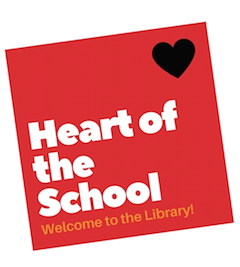 This is not the piece I planned for the inaugural post on this blog. I wanted to write about creating a culture of joy in our classrooms. I still do. I still will. Later.
This is not the piece I planned for the inaugural post on this blog. I wanted to write about creating a culture of joy in our classrooms. I still do. I still will. Later.
In our work as teachers, there are times when we have to put our plans aside and dive into that teachable moment.
This new MiddleWeb blog is called “Heart of the School.” There is no better first post for “Heart of the School” than a focus on ways to beat back the racism that is ripping at the heart of our nation.
I write this in the immediate wake of racists gathering in Charlottesville and chanting about taking “our country back.” But the promise of America was not and cannot ever be theirs. Teachers, we have a powerful role to play in keeping the heart of America clean of hate by making anti-racism a focus in our classrooms. Let’s roll up our sleeves!
Below are eight practical steps you can take, using the leverage you have as an educator to help society land on the side of justice and equity.
1. Take a stand
Make sure you are identifying yourself as anti-racist. When you talk about bigots, use honest terms, call it what it is, racism. Alt-right, white nationalism, and other such terms sugarcoat and they are deliberately designed to obfuscate the hate. Use correct terms to shine a light on the darkness of racism.
Similarly, speak up! Say it loud and proud, Black Lives Matter. LGBTQ folks deserve human rights simply because they are human. Muslims are not the enemy. Immigrants are not drug-dealers and rapists. Speak up!
Some say that posting your views on social media isn’t enough. That may be true. But it is something. When you share your anti-racist views, you make it easier for others to do the same.
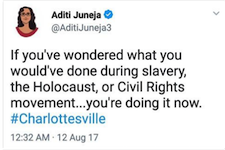
2. Educate yourself
Read, watch, ask questions, discuss. I suggest reading Yaa Gyasi’s terrific novel Homegoing to get a sense of how recently the scourge of African slavery was a state-sponsored reality and how its legacy of brutality still scars our nation.
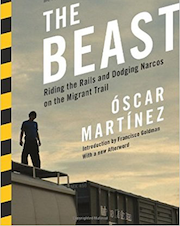
Next up on my to-read list is Tears We Cannot Stop: A Sermon to White America, by scholar Michael Eric Dyson. Want to read with me? Let me know in the comments. If there’s enough interest we’ll make a Heart of the School Book Club.
3. Expand your circle
In 1992, I had the privilege of learning from Professor Carl Grant, a founder of “multicultural education” and an active participant in the education for social justice movement. In the Foundations of Education course he taught he said something profound. Too many years have passed for me to remember the exact quote, but it was akin to: White teachers, if you want to rid the world of racism, start by getting an ice cream cone with a person of a different skin color than yours. His point? We don’t mix enough. We don’t know each other well enough. We need to start bridging the gulfs between “us” and “them” that we’ve created in our minds.
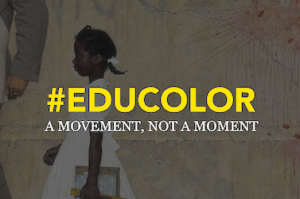
4. Align yourself
In addition to #educolor and other social media groups for teachers who value anti-racism, align yourself with organizations that actively promote social justice. Start with Teaching Tolerance. Teaching Tolerance offers an award-winning journal for educators, lesson plans, and teaching kits free to teachers who are ready to stand up for social justice. For more such organizations, Cult of Pedagogy blogger Jennifer Gonzalez offers A Collection of Resources for Teaching Social Justice.
5. Educate your students
I am a literacy specialist and librarian and when I think about educating students about racism, I think books. There are many terrific picture books, novels, graphic novels (like March by Congressman John Lewis) and nonfiction texts that are both great reads and instructive.
I hope that readers of this blog will suggest more books in the comments. I want to share three I’ve recently read.
The Hate U Give by Angie Thomas is a riveting novel that centers on a teenaged girl’s experiences navigating her life. She is one of the few African American students at her prep school and lives in the heart of a racially segregated community plagued by poverty. Her worlds collide in heart-breaking ways when her childhood friend is murdered by a police officer.
- Turning 15 On the Road to Freedom: My Story of the Selma Voting Rights March is a brilliant memoir by Lynda Blackmon Lowery. This moving account resonates with the ongoing work of gaining and maintaining civil rights.
- Baseball Saved Us by Ken Mochizuki is a picture book about how one boy faces the horror of being placed in an internment camp for American Japanese during World War II. The issues of justice and struggle that Mochizuki’s book highlights makes it ideal for audiences of all ages.
For more suggestions, browse the brand new and amazing Social Justice Book List from the National Network of State Teachers of the Year.
6. Teach kids to respond to racism
Students need direct instruction and practice in what to say or do when they encounter racism or other instances of injustice or hate. Teach students to use Robert Cialdini’s If, When, Then model. The model helps people prepare themselves to speak up in a structured way.
Recently, I’ve practiced the model myself. I was bothered by some folks’ responding to the Black Lives Matter Movement with the idea that “all lives matter.” To my way of thinking, it denigrated the heart of the Black Lives Matter message. I used Cialdini’s frame to mentally prepare for if and when someone said it again. I prepared and practiced a response, “Yes, of course all lives matter. But right now, the lives of our African American brothers and sisters are threatened more than most. So, that’s where we need to shine a light.”
Students routinely witness microaggressions, subtle and even unintentional discrimination towards a person or a group of people from a marginalized community. They need instruction and guided practice on how to respond if and when they hear denigrating remarks.
7. Ground what’s happening now in history
Above I suggested sharing Turning 15 On the Road to Freedom with students. The book is an example of how people of many races bravely marched for justice and the terrific impact of grassroots protest.
Today there is much buzz about shutting anti-racist protesters down for myriad reasons. The buzz ranges from the notion that anti-racist protests incite violence to the inconvenience of having highways closed to traffic during protests. Showing students how social justice movements worked in the past and ask them to think about them in terms of the present can add important perspective to the debate.
Let’s also remember that when we teach history we should do it with a focus on resistance movements rather than on the oppression itself. I am Jewish and as a child I read obsessively about the horrors of the Holocaust. I will never forget my father telling me to stop focusing on the misery and start focusing on people who fought back.
Teaching about the Holocaust without talking about the Warsaw Ghetto Uprising is irresponsible. There are examples of freedom fighters and resistance movements in every story of oppression. Share these stories. Students need a vision of action-based responses to oppression.
8. Teach with a social justice lens
Adopt a lens of social justice and anti-racism. As you plan your units think about ways to integrate social justice into your curriculum. Applying some of the ideas above is easier in some subjects than in others. But, if we want change, we must work together to infuse it across classes and content.
Injustice transcends politics
Teachers are in a tough position. When it comes to politics we try to be neutral, and we should. However, racism and mass injustice transcends politics.
There is no way to stay neutral in the face of hate. Staying silent doesn’t equal staying out of It. When we don’t speak out against hate, middle grades students can interpret our silence to mean either “there’s not a problem here” or “this is not a problem that concerns us.” In this case, silence speaks loudly. Racism and other forms of injustice and oppression are problems for all of us. Do not stay silent. Do not let your students think you are on the side of the oppressor.
Martin Luther King, paraphrasing 19th century abolitionist Theodore Parker, has said, “The arc of the moral universe is long but it bends toward justice.” Teachers, let’s be part of the effort to bend it more quickly and let’s honor our students by allowing them to help.
Do you agree that social justice issues must be at the heart of our classrooms? How do you fight hate?

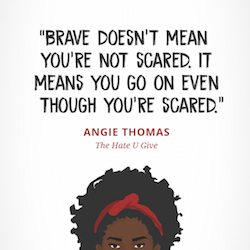 The Hate U Give
The Hate U Give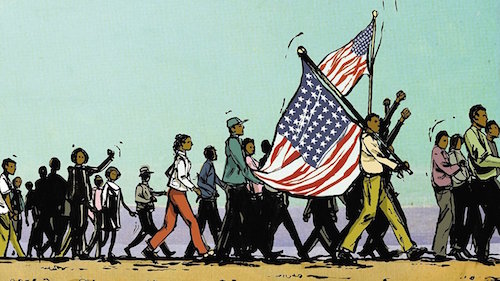

































Awesome piece. Teachers are in such powerful positions to change our world and the lives within it. These strategies can make a huge difference in the fight against hate and intolerance!
Thanks, Dr. Rankin. I value your work so much.
Right back at you! :-)
Excellent piece. Great talking points which I will use this in my work as a parent educator and my work in child protective services. Thank you for the insight.
Thanks, Shelly! You are a warrior for justice, that’s for sure. I love you to the moon and back.
Love this post! Thank you for sharing your thoughts & ideas. All are very valuable to educators as well as the general public.
Thank you, Debbie. Best wishes for a wonderful new school year.
Thank you for this post. I especially appreciate your challenge to teach through a social justice lens. I have been working on ways to incorporate social justice into STEM curriculum. The critical pedagogies model encourages teachers to allow students to take the lead in examining societal injustices. I recommend The Immortal Life of Henrietta Lacks as a great text for high school students to start this discussion. Health care disparities, environmental racism and food insecurity are all topics that should be discussed in STEM classrooms. Also, each of us needs to examine our classrooms, schools and school systems for racial disproportionately in gifted ed and discipline and act to dismantle the systems that create injustice in our own spheres of influence. Thanks again for your work.
Thanks for sharing such wonderful ideas, Lenora! I recently watched Hidden Figures. That’s a good model for science and math students too.
Wow…with this first post you showed all of us the ways in which we can make sense of the madness, for ourselves and our students. Our work has never been more important. Thank you.
Thank you, Kathleen.
These links and resources are helpful and appreciated.
Kevin
I am so glad!
I want to read the book with you Jen! Thank you for this blog and taking a stand! It matters!
Akliah, it’s Rita, actually. I hope Jen will read with us too! I will get back to you on a book club. Hugs!
Great article, Rita…. helpful to me as a parent and as an educator. I am so grateful that my children have a chance to learn from you.
Amy, you are so wonderful. I adore your children. I learn so much from them, you, and all of our amazing community.
You are right on, Rita. Excellent blog. Sharing it with my friends.
Thank you, Bev!
Helpful post, Rita. I’ll share with my teacher friends. I’d love to be a part of the book club you mentioned!
Great! I’ll be in touch, Lori!
It’s important to identify racism and hate, and not avoid those topics. But I feel that there is activism, in which a person or people are identified and maybe shamed into behaving in a more peaceful manner (at least in some situations)…. Is there also a second approach (and is there a name for it?) that is more directed at encouraging dialogue and shared experiences, to change the hearts of the haters?
Although I feel an urge to be an activist and fight for what is right, to be brave- I feel like taking an aggressive stance changes the problem, without necessarily making things better. Or am I being too meek? But I do try to listen to the arguments of people who are hateful, discuss and debate (without ever allowing them to think I agree with behavior that is hateful or bullying.)
Nicole, YOU get to fight hate in the way that feels most natural to YOU. I do not think everyone needs to be aggressive (in the way I think you are talking about.) I am not aggressive and identify as a pacifist.
However, I do think SOME folks MUST be aggressive. I suggest you watch the Black Panthers documentary on PBS. http://www.pbs.org/independentlens/films/the-black-panthers-vanguard-of-the-revolution/
This is what my thesis is all about. Thank you for this post.
You are welcome! What a great topic for your thesis.
Rita,
Thanks for sharing this information with me through PDI. I appreciate your dedication to the field. Stay safe during this chaotic time.